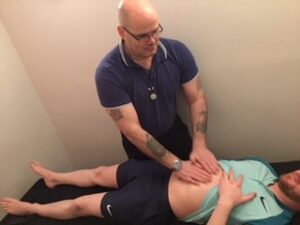- Lack of proper warm-up: A proper warm-up is essential before starting any workout, as it helps prepare your muscles and joints for the movements you’ll be doing. Skipping the warm-up or not doing it properly can increase the risk of injury.
- Incorrect form or technique: Using incorrect form or technique during exercises can put unnecessary stress on your muscles and joints, leading to injury. It’s important to learn the proper form and technique for each exercise before attempting it with heavier weights or higher intensity.
- Overtraining: Overtraining occurs when you push your body too hard without allowing it enough time to rest and recover. This can lead to fatigue, weakness, and injury.
- Lack of flexibility and mobility: Poor flexibility and mobility can make it difficult to perform certain exercises properly, which can increase the risk of injury. It’s important to incorporate stretching and mobility exercises into your workouts to improve your range of motion and reduce the risk of injury.
- Poor nutrition: Proper nutrition is essential for overall health and fitness. Without adequate fuel and nutrients, your body may not have the strength and endurance it needs to perform exercises safely and effectively.
- Using too much weight: Using too much weight or trying to lift beyond your current capabilities can lead to injury. It’s important to start with a weight that is appropriate for your current fitness level and gradually increase the weight over time as you get stronger.
Overall, gym goers can reduce their risk of injury by taking proper precautions, including warming up properly, using correct form and technique, allowing enough time for rest and recovery, improving flexibility and mobility, maintaining proper nutrition, and using appropriate weight for their current fitness level.
A proper warm-up is essential before starting any exercise, as it helps prepare your muscles
and joints for the movements you’ll be doing. Here are some steps you can follow to warm up before exercise:
- Start with low-intensity cardio: Begin your warm-up with 5-15 minutes of low-intensity with Swiss ball , such as jogging on the spot, jumping jacks, or cycling. This will help increase your heart rate, warm up your muscles, and improve blood flow.
- Dynamic stretching: After your cardio, perform dynamic stretching exercises, which involve movement and can help improve flexibility and range of motion. Examples of dynamic stretching include walking lunges, high knees, and leg swings.
- Sport-specific drills: If you’re doing a sport or activity that requires specific skills or movements, perform some sport-specific drills during your warm-up to help prepare your body for the activity. For example, if you’re playing basketball, you might practice shooting or dribbling to warm up your upper body and improve coordination.
- Gradually increase intensity: As you continue with your warm-up, gradually increase the intensity of your exercises to match the intensity of your workout. For example, if you’re doing a weightlifting workout, start with light weights and gradually increase the weight as you warm up.
- Focus on problem areas: If you have specific areas of your body that are prone to injury or tightness, spend extra time warming up those areas with specific exercises or stretches.
Remember, a proper warm-up should last at least 10-15 minutes and gradually increase in intensity. By taking the time to properly warm up before exercise, you can reduce the risk of injury and improve your performance.
Scott Bryant can help with injuries in several ways:
- 4 hour Assessment: Scott will assess your injury to determine the cause and extent of the problem. This will help him develop a customised rehabilitation plan that is tailored to your specific needs.
- Exercise modifications: Scott will modify your exercise program to accommodate your injury, ensuring that you are still able to work towards your fitness goals while avoiding further injury.
- Functional training: Scott specializes in functional training, which focuses on improving overall strength, flexibility, and mobility to help clients perform better in their everyday lives. This type of training can be particularly beneficial for people who have injuries, as it can help improve range of motion and reduce pain.
- Rehabilitation exercises: Scott will prescribe specific exercises to help rehabilitate your injury, building strength and mobility in the affected area.
- Lifestyle advice: In addition to exercise, Scott may also provide lifestyle advice to help you manage your injury, including nutrition, stress management, and rest and recovery strategies.
Overall, Scott Bryant can provide personalized support and guidance to help you recover from an injury and return to your normal activities as quickly and safely as possible. By working with Scott, you can also learn strategies to prevent future injuries and maintain your overall health and wellness.



